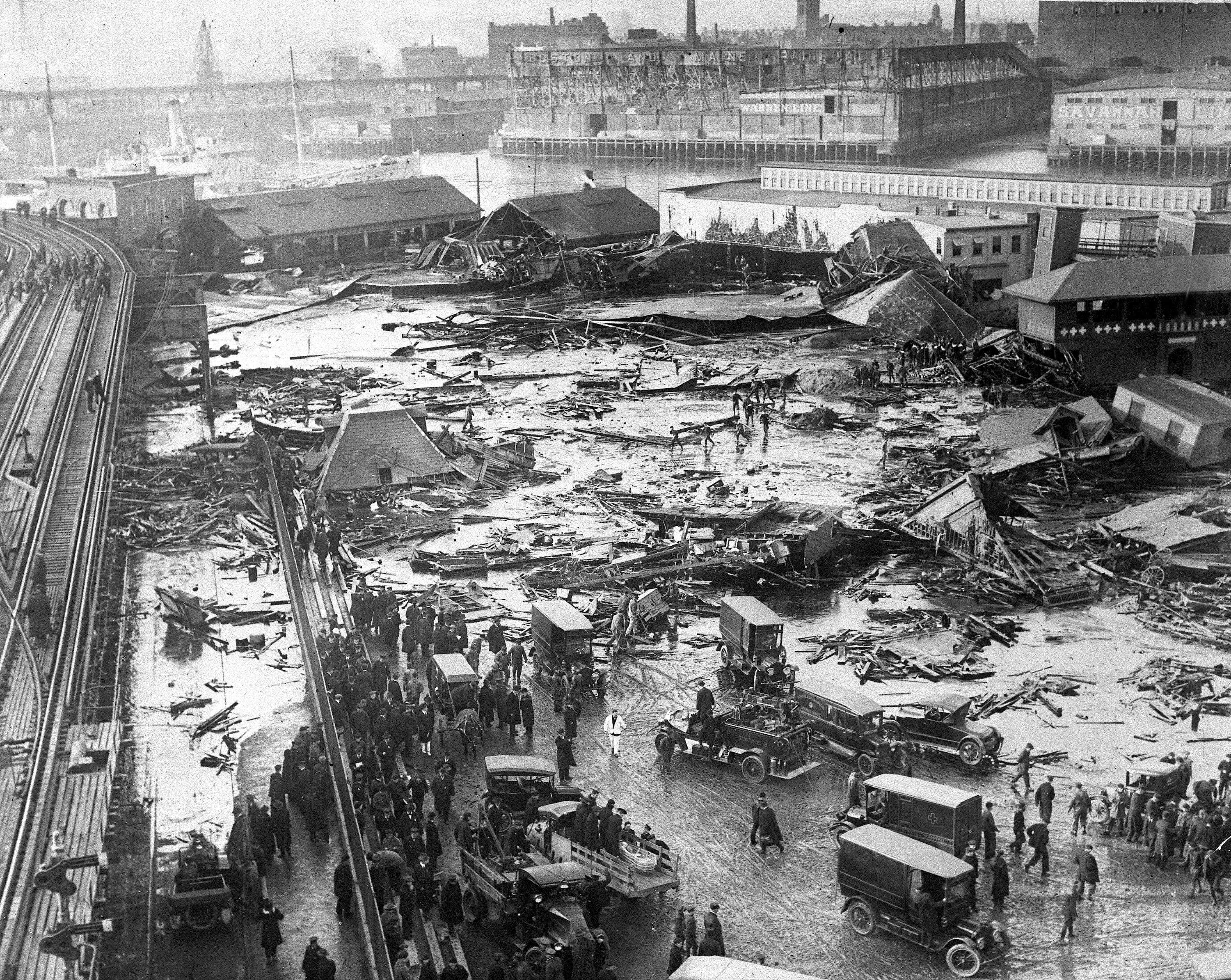Monday, April 8, 2013
The Boston Molasses Flood
On January 15, 1919 a large molasses storage tank in the North End neighborhood of Boston failed, sending a wave of molasses into the city and nearby Boston Harbor. 21 people were killed and 150 injured in this bizarre event, which you can read more about here:
Boston Molasses Disaster
Fluids don't always do what you'd expect at strange scales. Molasses seems lethargic and harmless enough by the handful, but when a 50-foot-tall, 2.3 million gallon tank ruptured, the potential energy released had nowhere to go but the acceleration of a monster wave of dense but mobile fluid. The wave reached 35 miles per hour at its peak, and given its density buildings were demolished on contact.
Clearly this is totally unacceptable, and one of the first class-action lawsuits in Massachusetts history sought to ferret out the root cause of the failure. Partly it was a result of poor construction and inadequate testing. A rapid temperature increase over the previous 24 hours likely raised the tank's pressure more than designers anticipated. Finally, fatigue cracking, a poorly-understood topic considered esoteric at the time, probably immediately led to the catastrophic failure. It's one thing when failure happens while pushing the envelope of human achievement. Failure on an ordinary day at an ethanol production plant, by contrast, is just as tragic and totally uncool.
Subscribe to:
Post Comments (Atom)

No comments:
Post a Comment